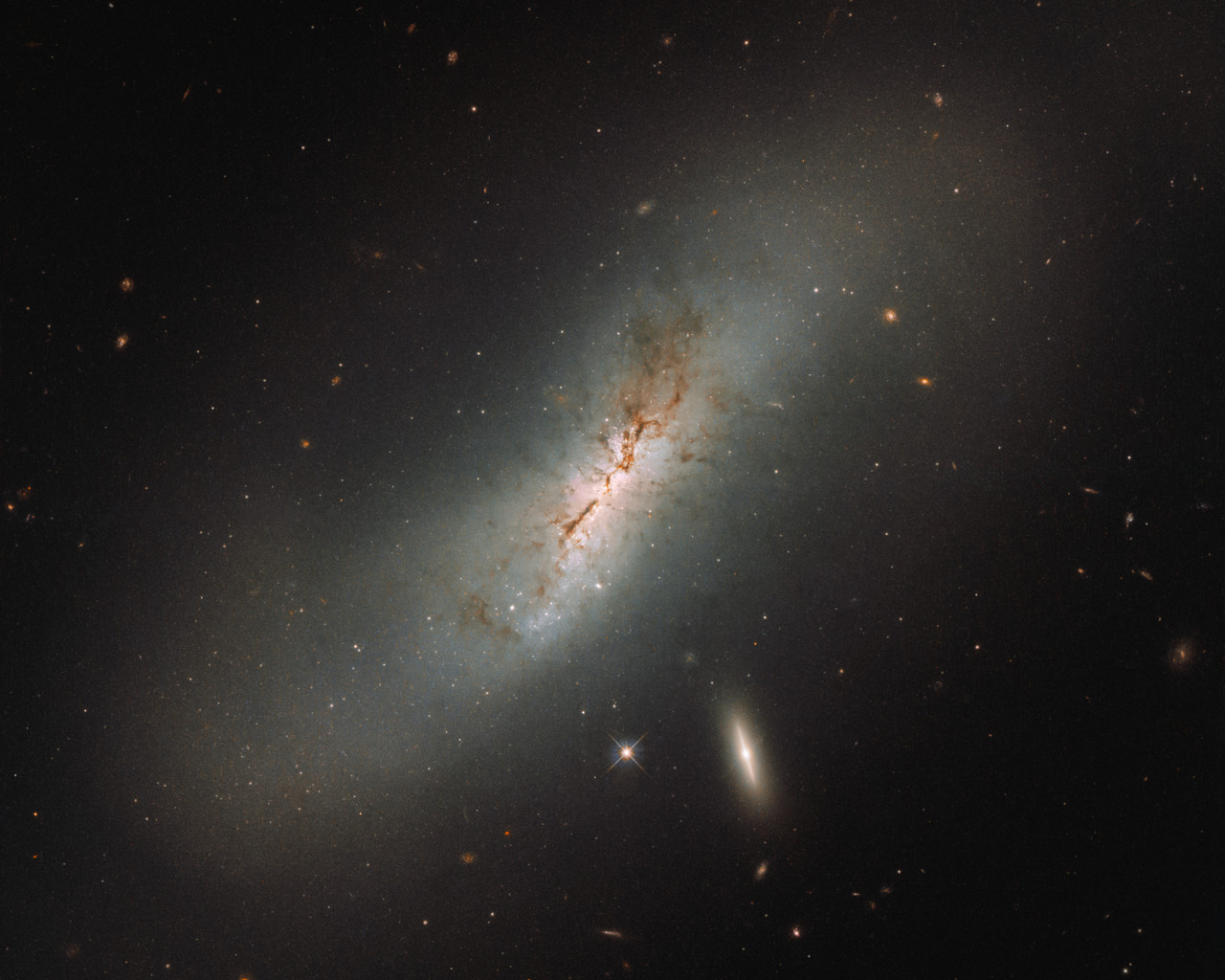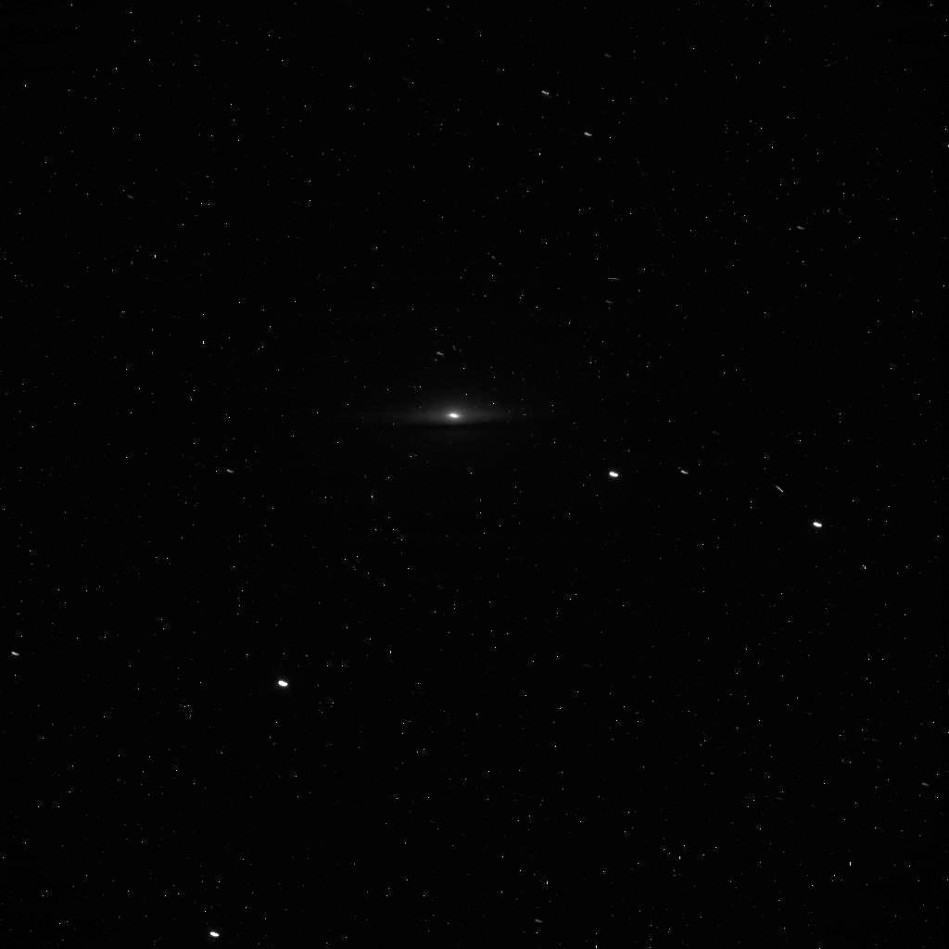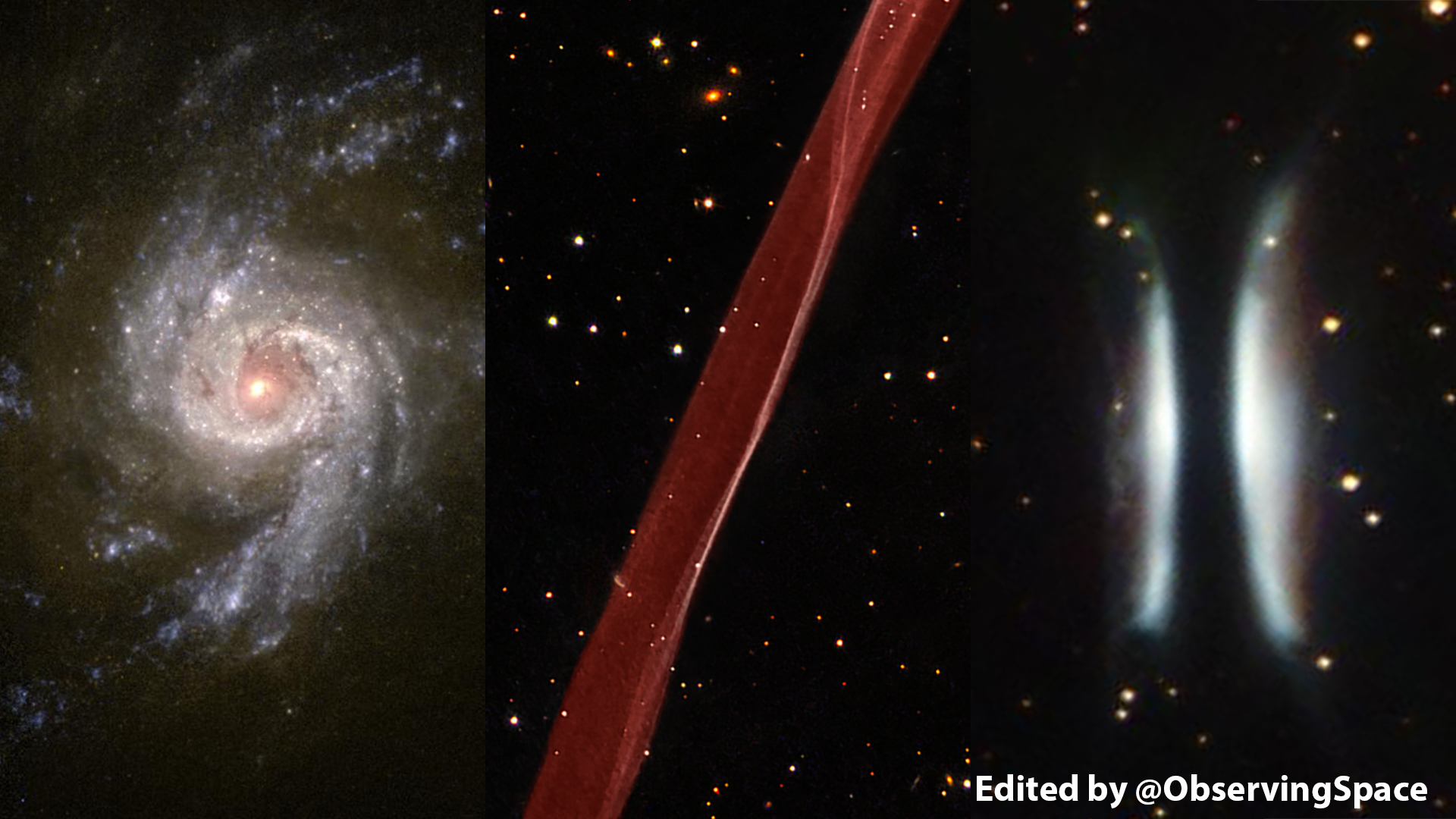
This Hubble image shows NGC 4424 and LEDA 213994.
The largest galaxy visible in the in the image is NGC 4424. The magnitude +11.7 galaxy is located 30 million light-years away in the constellation Virgo (The Virgin).
LEDA 213994, magnitude +15.5, is the smaller and flatter galaxy that appears below NGC 4424.
A magnitude +17.7 star (USNOA2 0975-06963766) appears in the lower center of the image.
In 2012, a Type Ia Supernova was observed by astronomers in NGC 4424. The supernova was dubbed SN 2012cg. You can view ground-based images of SN 2012cg here.
Image credit: ESA/Hubble/NASA


